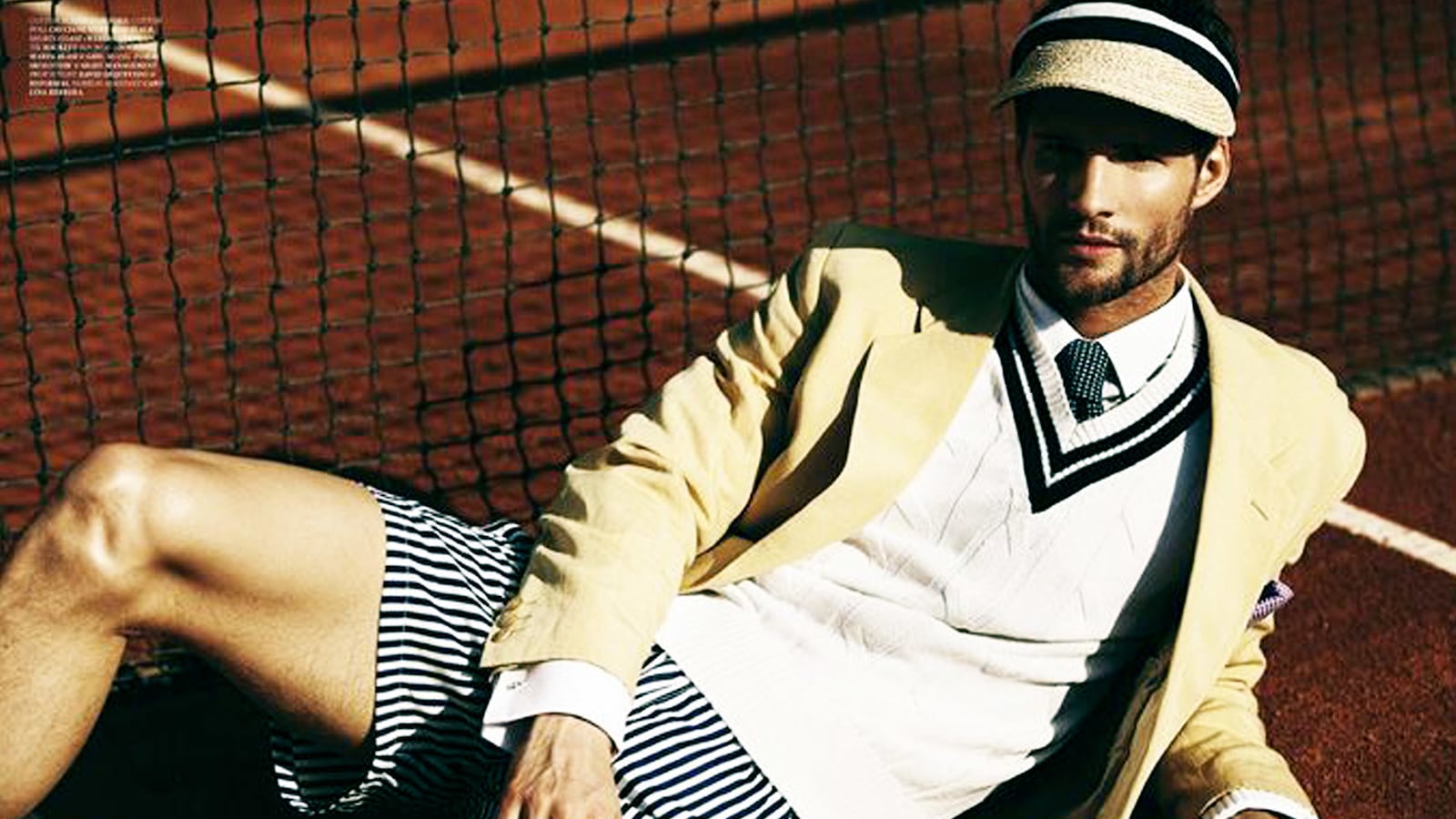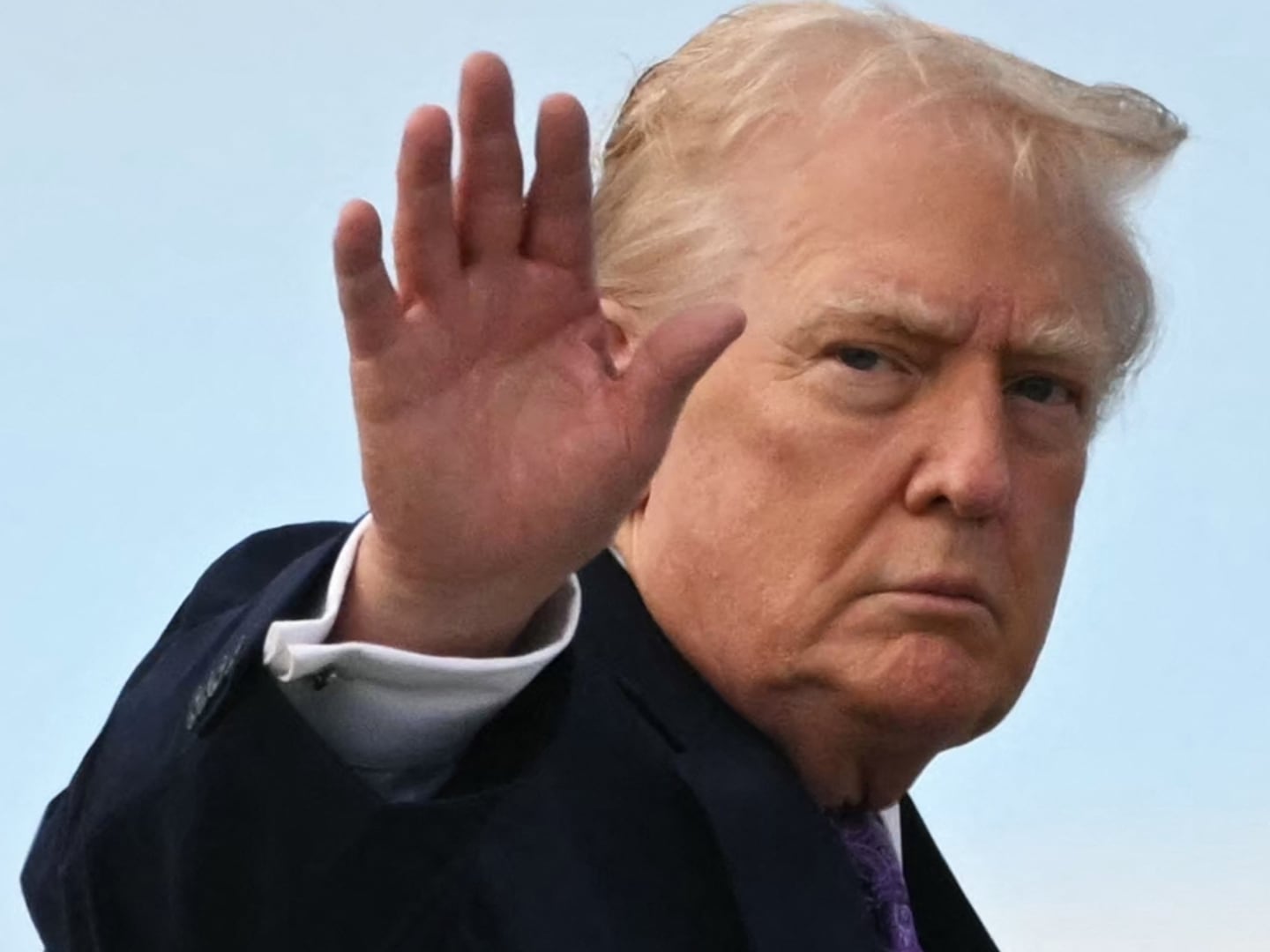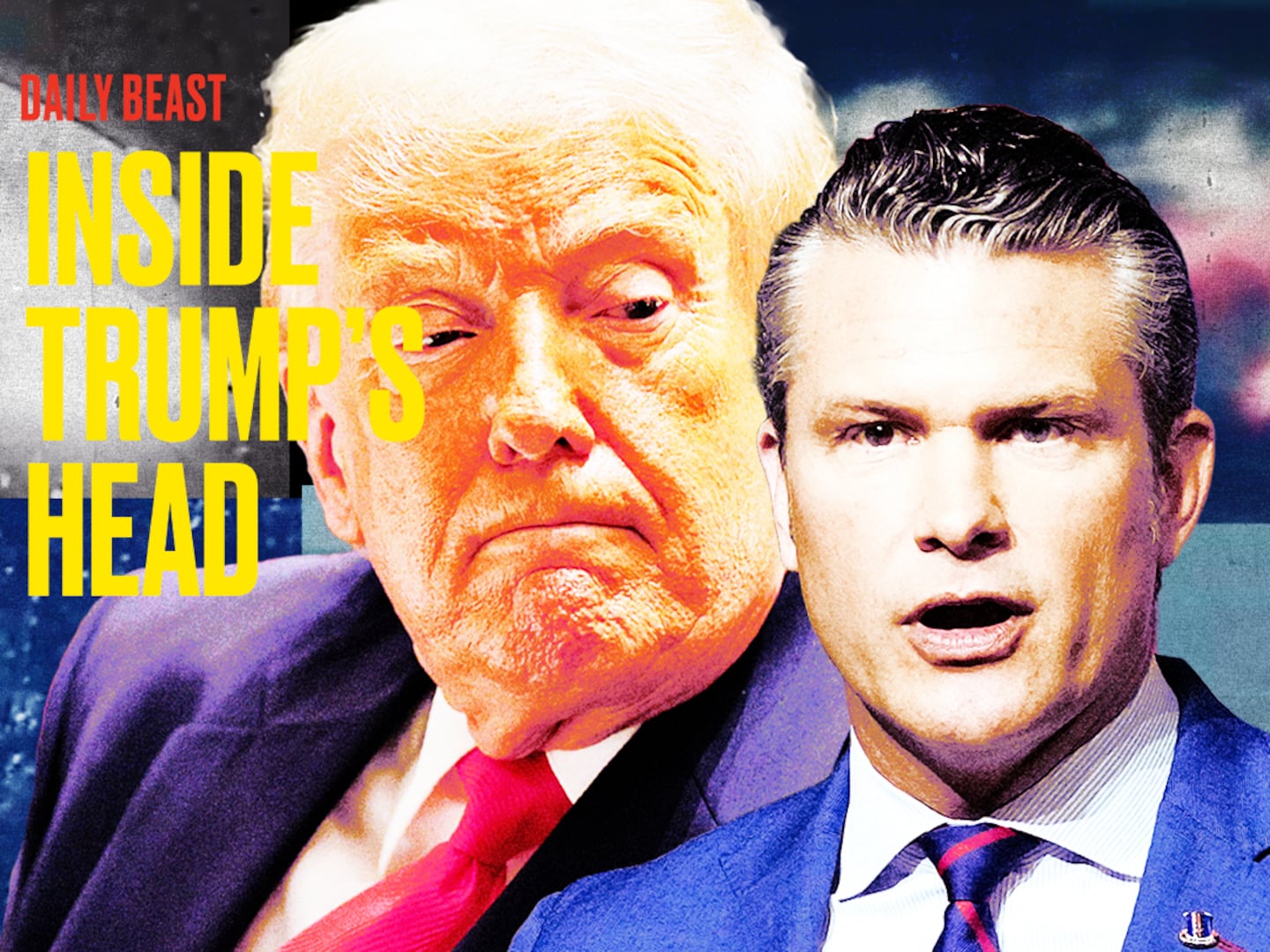When the U.S. Open begins today, the suite-level of the Arthur Ashe stadium will be packed with luxury brands basking in the grunts and glory of the court. Hor d’oeuvres will be passed and silver plastic chalices drunk from in the Moet suite. At Polo Ralph Lauren, an official sponsor, the spread will be vast and well-dressed. Peppered throughout the better boxes, designers will half-watch and half-Instagram their way through to the final. Fashion’s love affair with tennis extends well beyond Anna Wintour’s well-publicized crush on R-Fed, and its influence has been felt for generations. In fact, so much has been made of the sport’s magnetic hold on the imagination of fashion designers that it has become inherited wisdom, an unexamined truth of menswear.
But cast a gimlet eye on Court 1 and I’d wager there’s not much consonance between what’s on the backs of Messrs. Nadal, Murray, and Djokovic and what the rest of us mortals wear. The fact is, I submit, rumors of tennis’s influence on menswear are greatly exaggerated. We might live in the golden era of tennis but no longer of tennis fashion. There are a couple reasons why, but let’s begin at the beginning.
The patriarch of fashion in menswear is Rene Lacoste, a beak-nosed son of a Parisian industrialist who grew up to be a debonair racquet man. Lacoste was one of a group of four Frenchmen dubbed the Four Musketeers who dominated global tennis in the ’20s. But whereas his fellow athletes wore cumbersome cuff-and-collar shirts, virtually indistinguishable from what they wore off-court, Lacoste went in for a type of short sleeve cotton pique shirt hitherto unseen on the tennis court. Lacoste wasn’t the first tennis player to wear a polo shirt. As he noted in a 1979 interview with People magazine, he got the idea from a dude named George Horatio Charles Cholmondeley, better known as Marquess of Cholmondeley (and the great-grandfather of actor/director John Huston). “‘A practical idea,’ I thought to myself.” he said. The Marquess was an avid player who competed at Wimbledon in 1925.
But Lacoste was the most famous and the savvier businessman. He commissioned an English tailor to create his own polo shirts as well as his now famous white blazer emblazoned with a crocodile. (The origin of the crocodile is apocryphal, having either to do with Lacoste’s nasal protuberance or a bet he made for an alligator skin suitcase.) Pictures of Lacoste in action are, to today’s eye, incredible. It’s as if he walked straight from a Brooklyn hipster cocktail den onto the court at Wimbledon. He, too, knew he was dashing, and when he retired from professional tennis in 1928, he went all in on the polo shirt game.
The history of tennis—at least in the first half of the 20th century—was full of men like Lacoste: His nemesis Bill Tilden wore his famous cardigan; Fred Perry created an empire around his slim-fitting polo shirt and now nearly metonymic laurels. Then there are the countless lesser known players like the Marquess who probably were just as sharp dressers, if not servers.
But who among the modern greats exerts such sartorial sway? Andre Agassi, whose own denim-forward style was questionable in the ’90s, might have been the last great fashion maker. That was 30 years ago and even then it was less a matter of court fashion leaching off the court and more a matter of street fashion flooding on. Same with McEnroe and his preppy-punk look or Bjorn Borg, with his teeny-tiny shorts.
Why? As Mark Kovacs, the executive director of the International Tennis Performance Association, observes, the arc of tennis history is long and bows toward excellence and professionalization. This bodes poorly for menswear. “Before the ’70s,” says Kovacs, “tennis was essentially an amateur sport.” For Lacoste or Perry, the non-stop travel and endless tournaments to maintain rankings of today’s tennis players would be totally incomprehensible. “For the most part,” says Kovacs, “they traveled by ship, playing in each location for three to four weeks.”
As for the movements on the court, these were far from pedestrian but a far cry from the sort of virtuosic superhuman skills we expect from our tennis players today. These weren’t civilians, but the delta between what they did on the court and what we do on ours wasn’t so vast. And neither was what they wore. Until the ’40s, gentlemen wore long white trousers, leather shoes, and white collared shirts. Even with Lacoste’s polo shirt innovation, the pants didn’t become shorts until the ’40s. Though shorts got shorter—all the way to peak thigh on Bjorg—and the shirts grew colorful, all the way up to the ’90s, the go-to fabric was cotton. It wasn’t that on-court fashion was identical to what you or I might wear, but it was at least relatable.
Cotton, however, came with a cost. “Athletes can sweat three liters per hour,” Kovacs says, “that adds a few pounds of weight if it gets absorbed by the fabric.” As the game got more and more competitive and professionalized, players were looking for any sort of advantage. Carrying an extra three pounds of sweat-soaked cotton could be the difference between champion and contender. So in the ’90s, textile engineers began to design fabric meant to increase athletic performance. Ornament, which has always been at the heart of menswear—though it is often disguised as function or heritage—became indisputably irrelevant. And this movement peeled tennis fashion—and indeed all professional level sportswear—off from the fashion mainstream.
It wasn’t just that as the game got better so the clothes became another locus of potential on-court advantage. According to Jim Borneman, editor in chief of Textile World, the explosion of technical fabric came after 2001, when China was admitted to the World Trade Organization. “There was a shift in domestic companies to find product where the margins were,” Borneman says. “How do we create products where we actually make money?”
It’s not entirely correct to say tennis’s impact on fashion has waned. To the extent that tennis players are elite athletes and we all want to dress like elite athletes—even if the most athletically rigorous activity in which we engage is answering the door to let the food delivery guy up—sure, tennis still influences fashion. Even though Americans are getting less and less active, activewear is one of the fastest-growing markets and has been for years. According to NPD, sports apparel market is expected to generate about $165 billion in revenue worldwide this year.
But as for any influence felt in the upper echelons of menswear, in that gap between what we need to wear to cover ourselves and what we wear to express ourselves, that real estate is shrinking. What we really talk about when we talk about tennis’s influence on fashion is now nearly a hundred years old, a chord from the days of gentlemen players when tennis whites and polo shirts were kept crisp and clean. What we mean when we say tennis is not a sport but a lifestyle of leisurely lobs and kempt hedges. Meanwhile, the real tennis players grind it out in grueling fashion, their blood, sweat, and tears instantly wicked away.






